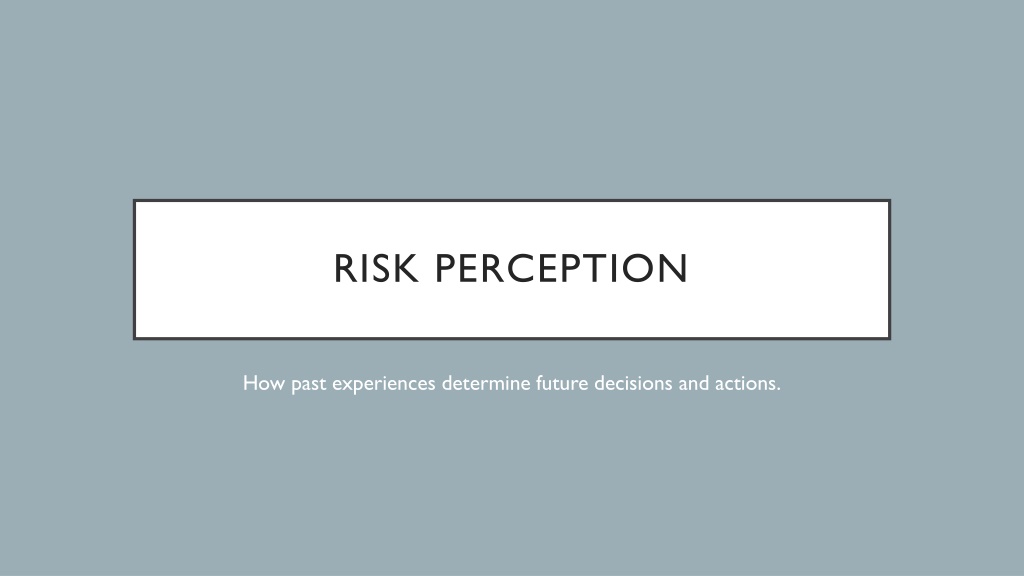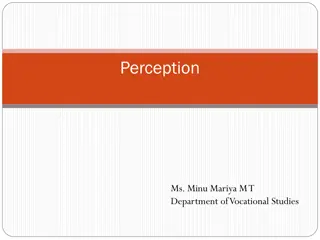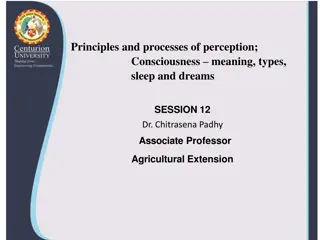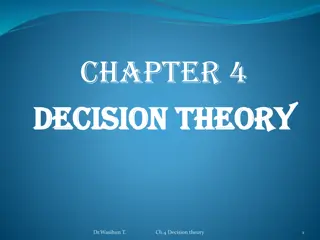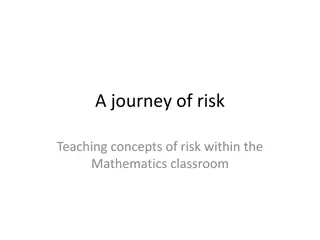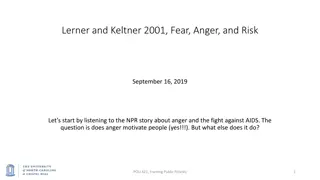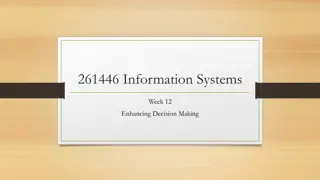Understanding Risk Perception and Its Key Factors for Informed Decision-Making
Risk perception involves how past experiences shape future decisions, with factors like perceived control, previous experiences, family concerns, and analytical thinking influencing our judgments. This influences how individuals and societies approach risks, highlighting the importance of recognizing diverse perceptions.
Download Presentation

Please find below an Image/Link to download the presentation.
The content on the website is provided AS IS for your information and personal use only. It may not be sold, licensed, or shared on other websites without obtaining consent from the author. Download presentation by click this link. If you encounter any issues during the download, it is possible that the publisher has removed the file from their server.
E N D
Presentation Transcript
RISK PERCEPTION How past experiences determine future decisions and actions.
WHAT IS PERCEPTION? Perceive: to become aware of, know, or identify by means of the senses (dictionary.com) Perception: an interpretation or impression; an opinion or belief (yourdictionary.com)
DEFINING RISK PERCEPTION Risk perception is a judgment of the adverse consequences of a particular hazard and can be made by an individual, a group of people, or society (Janmaimool and Watanabe, 2014)
IMPORTANCE OF RISK PERCEPTION Some find certain events or situations unacceptably risky and will do their utmost to avoid being involved, while to others the same events may offer exhilaration and thrills that stimulate their whole purpose in living. There may even be others to whom the particular event is a non-issue, something to be totally ignored. (Young, 1998)
KEY FACTORS IN RISK PERCEPTION Perceived control. Do people believe that they can control the situation? (Janmaimool and Watanabe, 2014)
KEY FACTORS IN RISK PERCEPTION Previous experiences. Have people handled similar risks in the past? (Janmaimool and Watanabe, 2014)
KEY FACTORS IN RISK PERCEPTION Family concerns. People in larger families usually consider the risk of harmful impacts to be higher due to their concern for familial safety (Janmaimool and Watanabe, 2014)
KEY FACTORS IN RISK PERCEPTION Analytical way of thinking. As individuals or as a group, people will have their own judgements of the probability of a hazard occurring, probability of negative impacts, severity of the impacts. (Janmaimool and Watanabe, 2014)
KEY FACTORS IN RISK PERCEPTION Trust. People s sense of trust in their government, hazard experts, and family affects the way they receive risk messages and the decisions made. (Bronfman et al., 2015)
KEY FACTORS IN RISK PERCEPTION The type of hazard Some populations expect certain hazards to occur, thus making it predictable. Unforeseen hazards are more difficult for that population to adjust to. (Ho et al., 2008) People are more concerned about the severity of negative impacts, not how likely the impacts are to occur. (Janmaimool and Watanabe, 2014)
of hazard occurring BASIC CONCEPTUAL MODEL Previous experiences (Janmaimool and Watanabe, 2014)
MULTI-LEVEL CONCEPTUAL MODEL (Ma ez et al., 2016)
THE LEVEE EFFECT Myth: people living in flood zones believe that risk has been eliminated once a barrier (levee, wall) has been constructed. Reality: risk is never gone, chances of barrier failure exist More people move into these areas assuming safety Greater number of people now exposed higher risk (Buchecker et al., 2013)
WHY RISK PERCEPTION MATTERS Understanding risk perception effective risk communication better risk mitigation strategies (Plapp and Werner, 2006)
